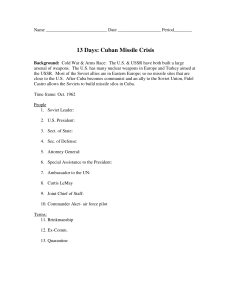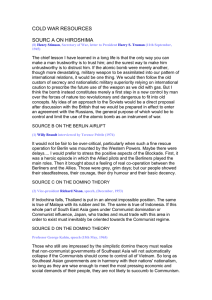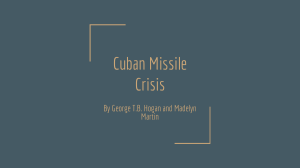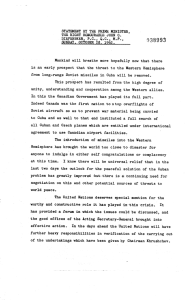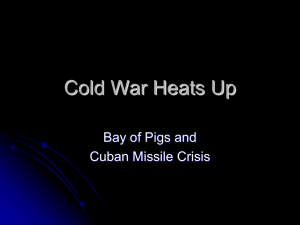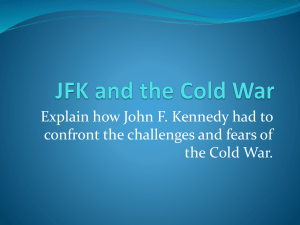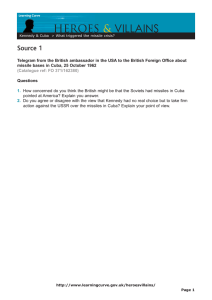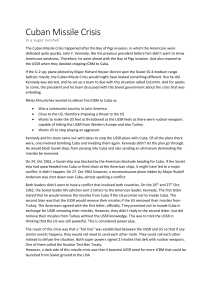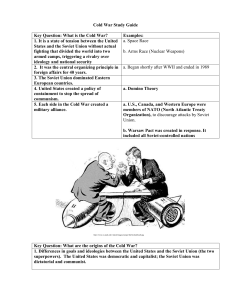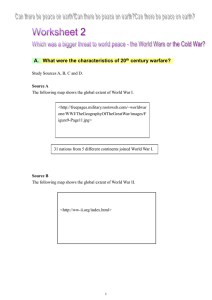The Cuban Missile Crisis
advertisement
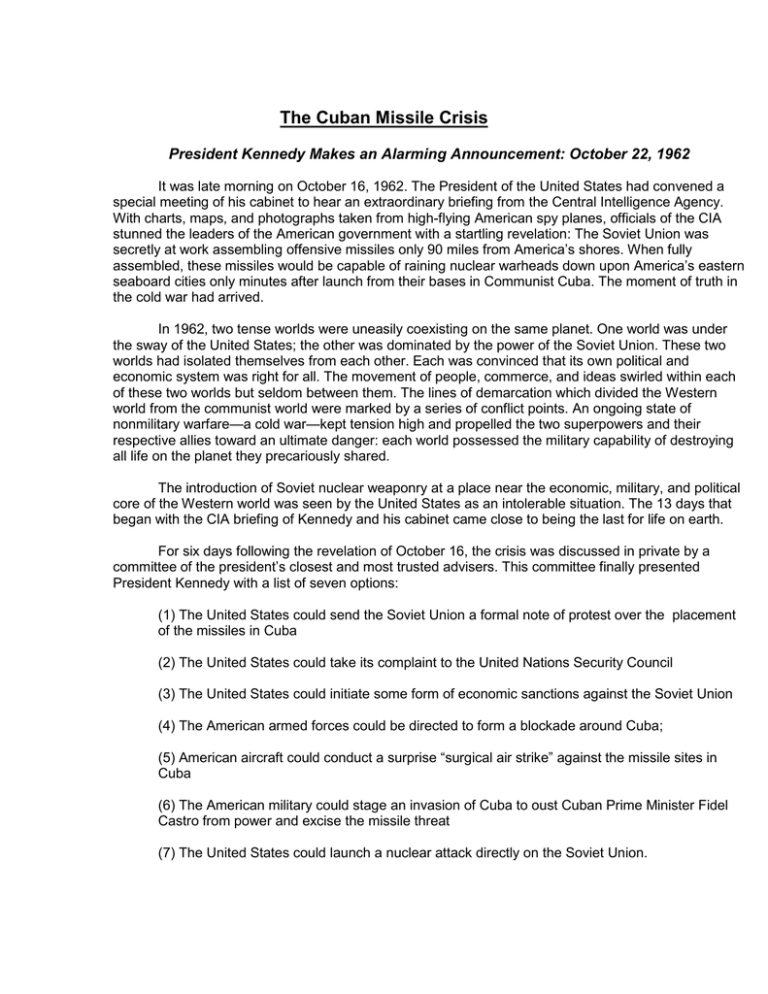
The Cuban Missile Crisis President Kennedy Makes an Alarming Announcement: October 22, 1962 It was late morning on October 16, 1962. The President of the United States had convened a special meeting of his cabinet to hear an extraordinary briefing from the Central Intelligence Agency. With charts, maps, and photographs taken from high-flying American spy planes, officials of the CIA stunned the leaders of the American government with a startling revelation: The Soviet Union was secretly at work assembling offensive missiles only 90 miles from America’s shores. When fully assembled, these missiles would be capable of raining nuclear warheads down upon America’s eastern seaboard cities only minutes after launch from their bases in Communist Cuba. The moment of truth in the cold war had arrived. In 1962, two tense worlds were uneasily coexisting on the same planet. One world was under the sway of the United States; the other was dominated by the power of the Soviet Union. These two worlds had isolated themselves from each other. Each was convinced that its own political and economic system was right for all. The movement of people, commerce, and ideas swirled within each of these two worlds but seldom between them. The lines of demarcation which divided the Western world from the communist world were marked by a series of conflict points. An ongoing state of nonmilitary warfare—a cold war—kept tension high and propelled the two superpowers and their respective allies toward an ultimate danger: each world possessed the military capability of destroying all life on the planet they precariously shared. The introduction of Soviet nuclear weaponry at a place near the economic, military, and political core of the Western world was seen by the United States as an intolerable situation. The 13 days that began with the CIA briefing of Kennedy and his cabinet came close to being the last for life on earth. For six days following the revelation of October 16, the crisis was discussed in private by a committee of the president’s closest and most trusted advisers. This committee finally presented President Kennedy with a list of seven options: (1) The United States could send the Soviet Union a formal note of protest over the placement of the missiles in Cuba (2) The United States could take its complaint to the United Nations Security Council (3) The United States could initiate some form of economic sanctions against the Soviet Union (4) The American armed forces could be directed to form a blockade around Cuba; (5) American aircraft could conduct a surprise “surgical air strike” against the missile sites in Cuba (6) The American military could stage an invasion of Cuba to oust Cuban Prime Minister Fidel Castro from power and excise the missile threat (7) The United States could launch a nuclear attack directly on the Soviet Union.
